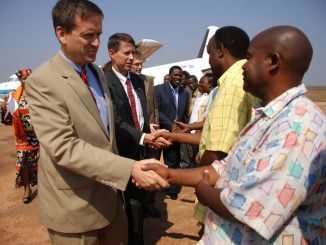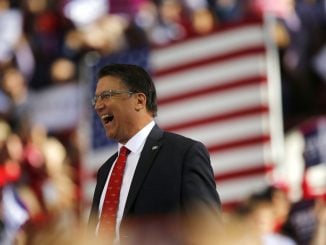JACKSONVILLE, N.C. There are men and women who make selfless choices every day. They make choices to serve and protect their country, they make choices to better the quality of life for themselves and others, and they make choices so others don’t have to.Others make the decision to serve as a way to not only serve their country but find also a purpose.”I was homeless when I joined the Marine Corps. I wanted to make something of myself so I joined and haven’t looked back,” said Sgt. Alfred Hunt. “The Marines is a volunteer service right now. If I can do it, that’s the sacrifice of doing it so someone else doesn’t have to,” said Hunt. “We should volunteer for as long as we can until our volunteers run out. This way you get men and women who want to do the job; who want to fight the good fight.”Hunt, 28, is a member of the 1st Battalion, 2nd Marines, Weapons Company of the 81st Platoon at Marine Corps Base Camp Lejeune, and he is one of 37,000 active duty Marines in North Carolina who have made the choice to serve their country. “When you’re out there getting shot at with bombs going off, you are not thinking about yourself. You’re thinking about helping [a fellow Marine] out,” said Hunt. “It’s not a choice. It’s instant. When the time comes, you don’t have to think about it.”The Armed Forces is North Carolina’s second largest economic driver, with Camp Lejeune alone making a $3.5 billion economic impact on the state. The base encompasses 156,000 acres which includes 11 miles of beach for amphibious operations, 34 gun positions, 50 tactical landing zones, three training facilities for military operations in urban terrain and 80 live fire ranges. Hunt and fellow members of the 81st Platoon recently completed a three-day training and readiness event focusing on the 65-member platoon’s ability to hit targets and successfully complete assigned missions. “We look at where we are at when coming into this training event,” said Master Sgt. Jason Neale. “We want to train to certain standards. We want to bring together the place, time, gear and Marines to successfully hit the targets during training. Our goal is to help maneuvering Marines get to their objectives.” The training exercises require much skill and coordination efforts from three firing agencies the mortar platoon, artillery squad and air station. The Fire Support Coordination Center listens for all transmissions. Communication is the key asset between the groups as motional units are tracked, reports are called in, distances to targets are judged, and plans are mapped. A Marine may only have 27 seconds for their shot to fire and land, and the coordination and training efforts beforehand can make all the difference. “It’s all done with maps. We can be in the middle of the forest and never see what we are shooting,” said 1st Lt. Michael Hanson. “If we are one degree off that can make a huge difference, which is why coordination and communication are key.”Targets have to be plotted, gun positions determined, ranges drawn and teamwork established. “It’s loud on the field and the enemy could be firing back,” Hanson added. “We have to be deliberate and not distracted by everything else on a battlefield.”We can do this day or night, rain, shine or snow. We can do this as long as the target can be identified.”Since 1941, Camp Lejeune has been the home of “Expeditionary Forces in Readiness” with a mission of maintaining combat-ready units for expeditionary deployment. “I grew up mostly relying on myself; learning to only count on myself,” Hunt said. “The Marine Corps taught me that I can count on other people.”
Related Articles

Article
Trump to nominate ex-congressman to lead international aid agency
WASHINGTON, May 10 (Reuters) – President Donald Trump will nominate former congressman Mark Green to head the U.S. Agency for International Development, the White House said in a statement on Wednesday. Green is a former […]

Article
Trump revokes Washington Posts campaign press credentials
WASHINGTON – Republican Donald Trump said on Monday he will no longer issue press credentials to the Washington Post, stopping the publication from gaining access to press areas at his presidential campaign events. His next […]

Article
McCrory looks toward the future
CHARLOTTE At Tuesday’s Rotary Club meeting in Charlotte, former Gov. Pat McCrory was honored with the Excellence in Leadership Award. The Rotarian honor recognizes excellence in industry and public service leaders with high ethical […]
